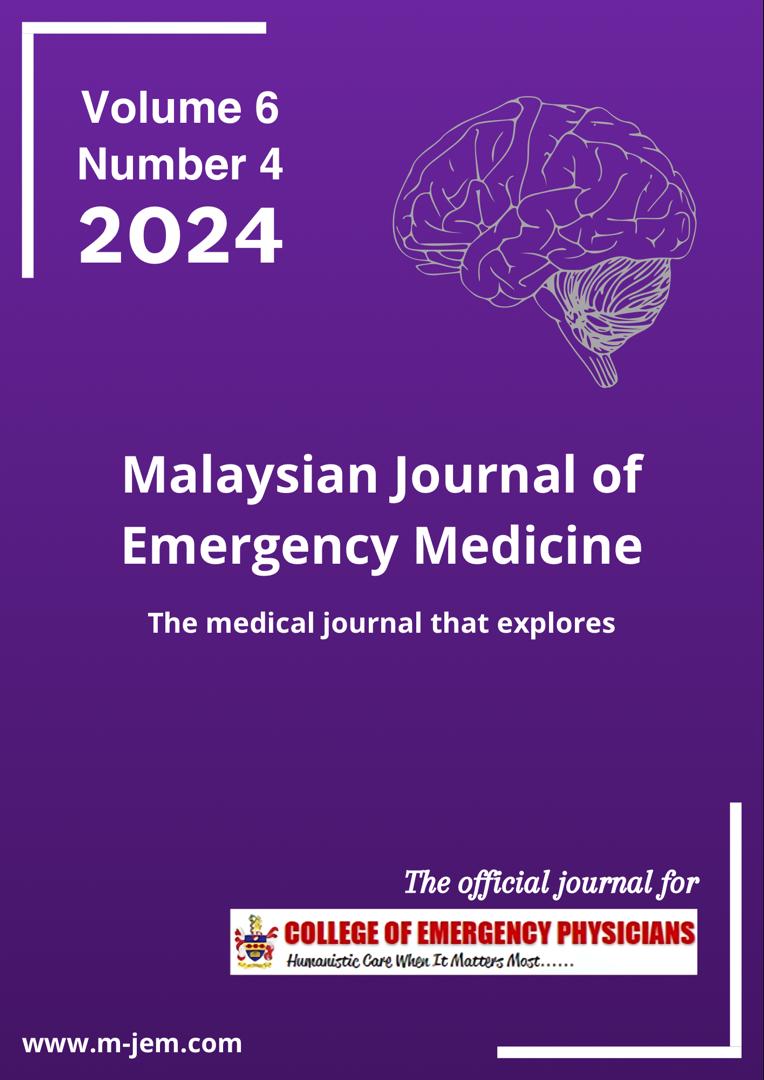The Impact of Pre-hospital 12-Lead Electrocardiography, Rapid ST-Elevation Myocardial Infarction Detection, and Paramedic-Led Hospital Pre-notification on Door-to-Needle Times
Main Article Content
Abstract
Introduction: Door-to-needle time (DNT) for ST-elevation myocardial infarction (STEMI) in developing countries still falls behind the recommended standard. This study assessed the effects of paramedics performing pre-hospital 12-lead ECG, detecting STEMI, and hospital pre-notification on ambulance scene time, transport time, and door-to-needle time in a developing country.
Method: This was an observational cross-sectional study with retrospective data comparison. The first stage of the survey assessed paramedics' competency in performing pre-hospital in-ambulance 12-lead ECG and detecting STEMI from twenty 12-lead ECG allocated. The second stage compared the ambulance response time and door-to-needle time between the two groups of pre-hospital ECGs and the first ECG performed upon arrival at the hospital (control group). The time recordings were obtained from the ambulance response data sheet. Data from the control group were obtained from a retrospective chart review.
Results: Twelve paramedics and 149 patients were included in this study. All paramedics were able to perform pre-hospital 12-lead ECG satisfactorily. Only 2 out of the 12 paramedics had acceptable knowledge of detecting STEMI. The mean scene times for the pre-hospital ECG group (n=82) and the control group (n=66) were 13±7 min and 11±6 min, respectively. The mean transport times were 10±4 min and 9±3 min, respectively. There was an improvement in DTN time (4 minutes–19.8±7.4 minutes vs 23.8±4.8 minutes when STEMI patients were pre-notified).
Discussion: The performance of the paramedic on pre-hospital 12-lead ECG was acceptable; however, identifying STEMI mimics was poor. Delays on scene and transport time when pre-hospital ECG was performed were as anticipated.
Conclusion: Introducing pre-hospital ECG in ambulances and pre-hospital pre-notification in developing countries is feasible, and the mean time for ECG is acceptable.
Metrics
Article Details

This work is licensed under a Creative Commons Attribution-NonCommercial 4.0 International License.

